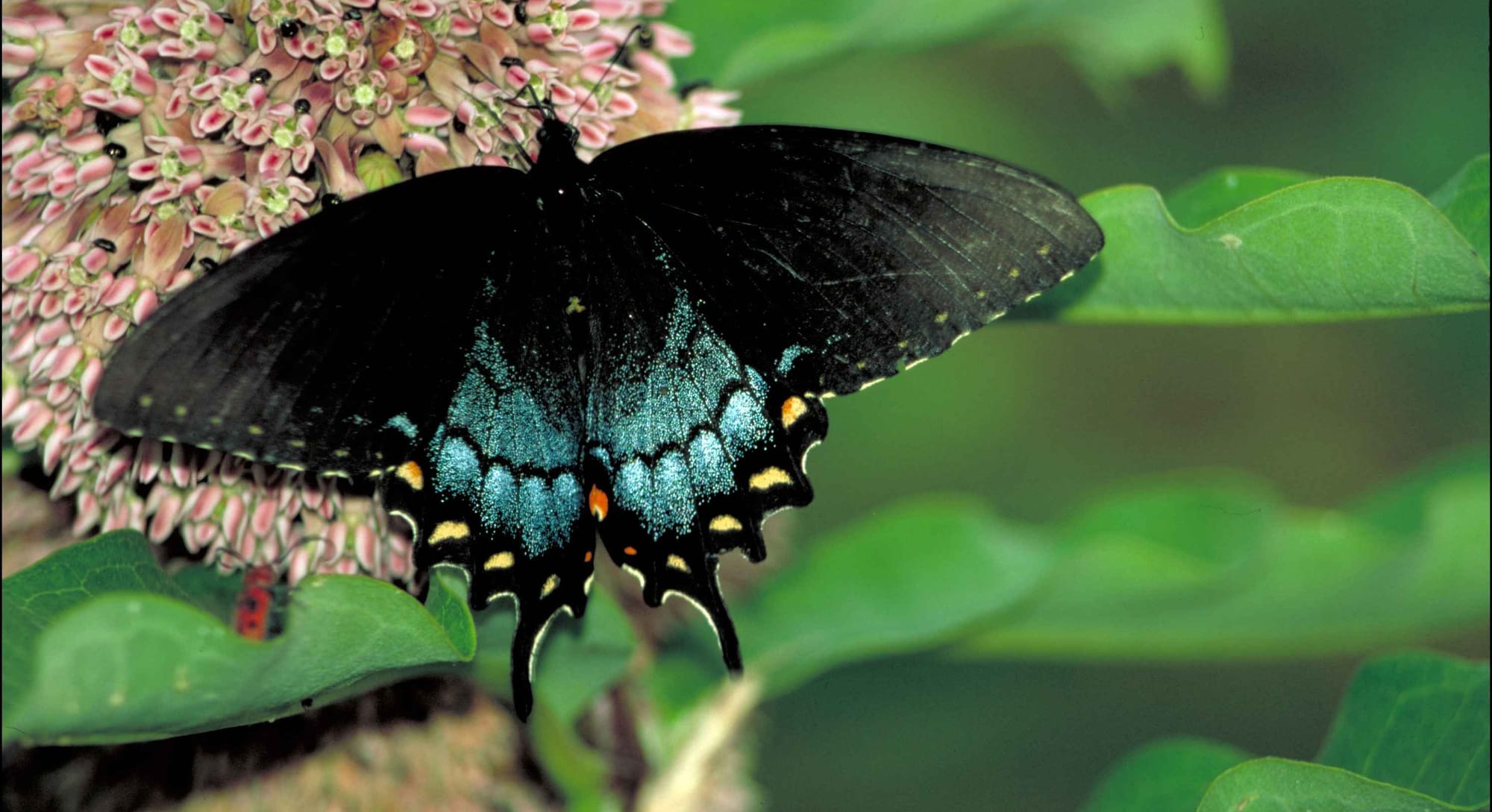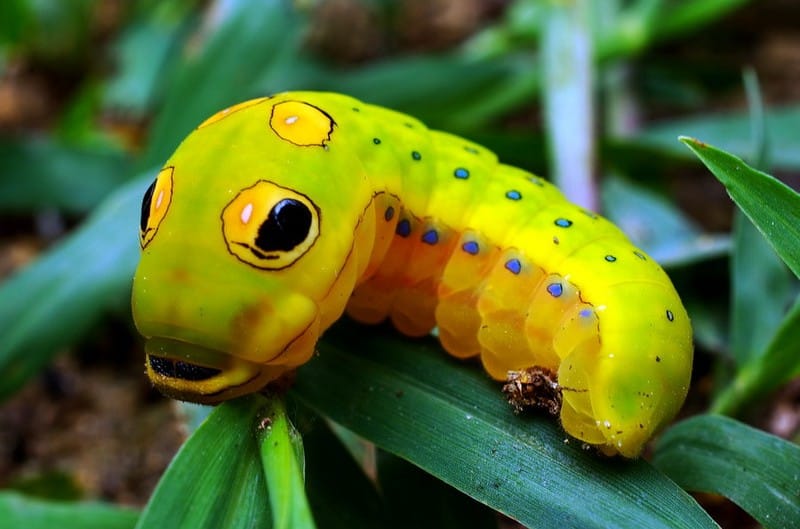Life on Earth Proves a Process-Relational World
Map-metaphysics assumptions about things' reality can distort our understandings of those things.

Personal anecdote time: When I got a tattoo of botanicals and a swallowtail butterfly across my shoulder a couple years ago, it was important to me that the butterfly be depicted as alive. You see, most people who get butterfly tattoos show carcasses. Butterfly emojis, too. When butterflies are alive and spreading their wings, the tops of their upper wings are usually roughly perpendicular to their bodies, or even bent away from their antennae, overlapping their lower wings like in the pictures. Yet starting in childhood, we're taught mental models that the defining shape of butterflies is with their upper wings shrugged up into a V. That's what happens when you pin down their dead bodies inside a specimen display case.

I think common mental models of butterflies present a nice, relatively benign little example of how our culture's tendencies toward what this blog calls map-metaphysics assumptions about the things that constitute existence can distort our understandings of those things. Map-metaphysics says that the most fundamental reality of a thing is what can be isolated from context, permanently pinned down, and essentialized; it underlies prioritizing reductionism over integration. But a butterfly exists to be alive. Its being is not primarily about outcompeting less "perfect" butterflies to be an ideal dead specimen, forever isolated and frozen behind glass, for human examination and classification. It goes about its business for its own ends, covering part of its lower wings to suit butterfly purposes rather than human ones. People can, of course, learn more about butterflies by dissecting them and reducing them to parts. Without reintegrating that knowledge back into butterflies' living, ecological and evolved contexts, however, they're just working with a simplified and probably distorted model, not the reality.
Like any living thing, a butterfly is always doing processes that often move it physically through its environment, and always move its environment metabolically and molecularly through it. It is never exactly the same, even for a moment, even apart from more outwardly evident developmental events like metamorphosis. That's basically what living is: a Theseus's ship of constantly replacing parts, with every breath and bite and sip, every excretory function and every shed surface cell. If those and other relational processes of living stop, the butterfly is no more. It has ceased to be. It is an ex-butterfly.
Those and other boundary-blurring, yet self-maintaining dynamical processes occur in relation to complex changing circumstances, including other organisms. The butterfly responds—and the circumstances respond in turn. The butterfly exists because of and as part of a niche and ecosystem (or under abnormal circumstances, a laboratory system) to which it inextricably matters. It benefits from and contributes to the maintenance and progression of broader systems, including but not limited to its own species. If a certain butterfly doesn't pollinate a certain flower, maybe a certain fruit doesn't happen, maybe that fruit's seeds don't grow into food or shelter that would have kept an endangered critter alive or provided evolutionary resilience against a changing climate.
How much of that process-relational reality is evident, let alone kept at top of mind, from looking at a splayed specimen in a box?
Maybe all that seems obvious. Of course life is a relational process. But Euro-Western culture approached inquiries about life in all its forms in a staunchly map-metaphysics mode for centuries. Indeed, much of science and society even now clings to the hope that questions of biology can be answered once and for all with primarily reductionist methods, clear-cut defining borders, context-independent laws and categorical ideals, and mechanistic or algorithmic material determinism. That hope is bolstered by the huge volume and value of information produced from research in this reductionist mode, and by the appearance of control and certainty that it can give. Ultimately, though, that hope is misdirected. The processes and relations that map-metaphysics brackets away for human analytical convenience don't actually disappear from relevance.
With the very zoomed-out view enabled by the two general directions of basic comparative metaphysics, it's possible to pick out a high-level pattern in the history of Euro-Western thought since the early modern period: over and over, it has become evident to some intellectual field's experts that further work under map-metaphysics assumptions couldn't answer some questions, so paradigm leaps forward in a process-relational direction were necessary to burst through those limitations. In most cases, the new paradigms integrated and built on the knowledge generated under the simpler and more approximate earlier models. The Copernican paradigm shift from an Earth-centric model to a heliocentric orbit model illustrates this nicely, shedding assumptions of static and universal perspective. The expansion from Newtonian to quantum and relativity physics in the early 1900s is another major example. The solidification of fractal and chaos theory branches of mathematics, and the geological confirmation that the Earth is shaped by plate tectonics, are more recent examples since the 1960s. (I'm always amazed at how recently continental movement became scientific knowledge.) Once we get into life sciences, even more examples abound, from the 1700s through today, spread across myriad sub-domains and scales.
During and after Europe's Scientific Revolution, "systematizing, naming and classifying dominated natural history [the predecessor of biology] throughout much of the 17th and 18th centuries." The idea that butterflies and other living things must be understood as part of an ecological "web of life" was largely absent from Euro-Western sciences until the work of visionary polymath Alexander Humboldt in the late 1700s and early 1800s. A bestselling biography from 2015 titled The Invention of Nature declared that Humboldt "revolutionized the way we [in Euro-Western culture] see the natural world" because he "found connections everywhere. Nothing, not even the tiniest organism, was looked at on its own. 'In this great chain of causes and effects,' Humboldt said, 'no single fact can be considered in isolation.'" Humboldt was a major inspiration for Charles Darwin, who of course was responsible for another process-relational paradigm advancement beyond creationism with his publication of On the Origin of Species in 1859. It's now foundational knowledge that the species we see today came to be through long processes, not one-time divine declarations of timeless essence.
The process-relational leaps ahead in life sciences keep coming. Though Darwin himself recognized many possible causal contributors to evolutionary processes besides pure, selfish, zero-sum competition, later "Darwinism" sought competition-centered evolutionary laws. It took additional process-relational paradigm leaps in the late 1900s through today for that understanding to be undermined within evolutionary biology. The work of Lynn Margulis and others on symbiotic relationships was largely resisted and ridiculed by (mostly white male) establishment scientists, until the evidence became overwhelming that cooperation had merely been previously overlooked by competition-obsessed researchers and was in fact very significant. Researchers now believe, for example, that "the intricate dynamics of mycorrhizal symbioses [are] paramount for promoting ecological sustainability and addressing current pressing environmental concerns."
Research on multicellular organisms' microbiomes is even reshaping concepts of biological individuality: most multicellular organisms turn out to be, on closer inspection, multi-species consortia engaged in complex and mutually significant relationality.* That includes humans. And butterflies. Similarly, the discovery of genetics and DNA once might have seemed to promise the reduction of life down to a deterministic universal code, but research shows even genes and their expression are shaped significantly by contingent contextual factors, including relations with other species.
There are other vibrant examples of process-relationality, like common mycorrhizal networks ("wood wide webs") and redefining intelligence, that I look forward to having fun with in future posts. While I'm no leading authority on biology, I'm much more familiar and comfortable with critiquing research designs and comparing interpretations in biology than in physics. It's my long-ago academic and research background (I published on butterflies!), and I've kept up with developments over the years with lots of reading academic articles and newer textbooks as well as deeply-researched bestselling books. The Light Eaters by Zoe Schlanger is a recent favorite in the latter category, along with Ed Yong's books. Though they of course include information from reductionist research, they and bookshelves' worth of other works on life sciences are process-relational without saying so. Applying that directional framing puts them in wider interdisciplinary conversations and illuminates their paradigm-shifting convergence.

As modes or methodologies, map-metaphysics assumptions will always have their uses. What's harmful to both accurate knowledge and shared well-being is getting stuck inside them, mistaking the human conceptual maps that result from those assumptions for the actual territory of reality. Such maps exclude blurrings, complexities, dynamics, perspective limitations, and unknowables that turn out to be not just relevant but fundamental to how existence unfolds, and to our place within it. We should be intentional about leveraging the conveniences of map-metaphysics to navigate rather than supplant our true terrain. I daresay it might be better for map-metaphysics' priorities of certainty, clarity, and efficiency if our culture took one, big, metaphysical-level and therefore all-encompassing process-relational leap forward in understanding how interdependent things are at every level, rather than continuing to do these process-relational advances piecemeal, topic silo by topic silo.
*There are ongoing debates about whether, as a general rule, the whole assemblage of species ("holobiont") can be a unit of evolutionary selection. The answer isn't central to my point that multispecies relations are key to development and well-being.